Join More Than 50,000+ Subscribers and get latest camera news and rumors
NEW CAMERA VIDEOS ON YOUTUBE
|
By admin, on March 11th, 2016
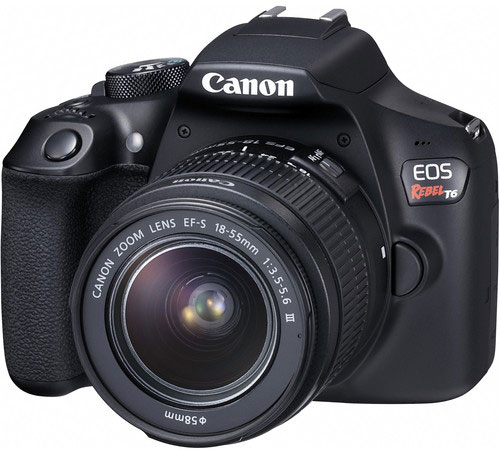 We have done a extensive research to find out why Canon announced 1300D / T6 camera ? the camera features almost same core specification as of Canon 1200D except wireless connectivity. The core specification of Canon Rebel 700D and 1300D matches absolutely. We have done a extensive research to find out why Canon announced 1300D / T6 camera ? the camera features almost same core specification as of Canon 1200D except wireless connectivity. The core specification of Canon Rebel 700D and 1300D matches absolutely.
Now the worst part, Canon 1300D is still not able to compete with Nikon 1+ year old entry level DSLR camera Nikon D3300 ? Sony A58 also comes at approx same price point and gives you very advance core specification.
I agree upto a point that Canon 1300D is a budget camera but why anyone will going to buy 1300D when there are lot of better options available ?
Take a look at the specification comparison review of all the major competitors at one place.
Canon 1300D vs Nikon D3300
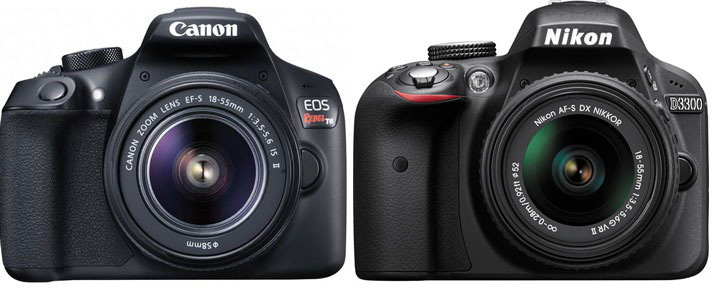
| Features / Models |
Canon 1300D/T6
|
Nikon D3300
|
| Megapixel |
18 megapixels |
24 megapixels |
| Sensor size / type |
APS-C (22.3 x 14.9 mm) |
APS-C (23.5 x 15.6 mm) |
Image processor
|
Digic 4+ |
Expeed 4 |
| Low pass filter |
Yes |
No |
| Image stabilization |
No |
No |
| AF System |
Contrast + Phase Detect sensor |
Contrast Detect +Phase detect |
| AF points |
09 points |
11 points |
| ISO |
100-12800 |
100-25600 |
| Shutter Min/Max |
30sec 1/4000 sec |
30 sec 1/4000 sec |
| Top Continuous Shooting Speed |
3fps |
5fps |
| Video |
1920 x 1080 (30p,24fps) |
1920 x 1080 (60, 50, 30, 25, 24 fps) |
| Display |
3.0″ LCD Rear Touch Screen (920,000 pixels) |
3.0″ LCD Rear Touch Screen (921,000 pixels) |
| Viewfinder |
Optical Viewfinder (95%) |
Optical Viewfinder (95%) |
| Hot-shoe |
No |
No |
| Battery Life (CIPA) |
500 shots |
700 shots |
| Wireless connectivity |
Built-In |
No |
| Dimensions |
129 x 101 x 78 mm |
130 x 100 x 76 mm |
| Weight |
485 g |
480g |
Nikon D3300 features better sensor compared to Canon 1300D, with the Nikon D3300 you get not only more resolution buy you also get more ISO range.
The absence of low-pass filter as well as more resolution allows you to get more clear shot compared to Canon 1300D.
Bit-better AF system, Nikon D3300 AF system is more advance compared to Canon 1300D and gives you extra 2 AF points on the display/viewfinder screen.
The other biggest advantage of the camera is continuous shooting speed of the Nikon D3300.
At the end Nikon D3300 also offers you to capture more stunning images in a single recharge.
Verdict: We recommend you to get Nikon D3300 camera, the Nikon D3300 features better sensor, will give you better low-light performance, the Nikon D3300 also offers fast continuous shooting speed and more AF points. Undoubtedly the Nikon D3300 is better compared to Canon 1300D.
Buy Nikon D3300 from Amazon – B&H || Also see Nikon D3300 Recommended Lenses
Canon 1300D vs Canon 700D
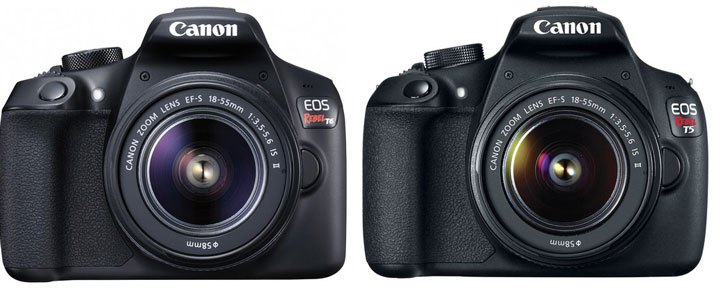
| Features / Models |
Canon 1300D/T6
|
Canon 700D
|
| Megapixel |
18 megapixels |
18 megapixels |
| Sensor size / type |
APS-C (22.3 x 14.9 mm) |
APS-C (22.3 x 14.9 mm) |
Image processor
|
Digic 4+ |
Digic 5 |
| Low pass filter |
Yes |
Yes |
| Image stabilization |
No |
No |
| AF System |
Contrast + Phase Detect sensor |
Contrast Detect +Phase detect |
| AF points |
09 points |
09 points |
| ISO |
100-12800 |
100-25600 |
| Shutter Min/Max |
30sec 1/4000 sec |
30 sec 1/4000 sec |
| Top Continuous Shooting Speed |
3fps |
5fps |
| Video |
1920 x 1080 (30p,24fps) |
1920 x 1080 (30, 25, 24 fps) |
| Display |
3.0″ LCD Rear Touch Screen (920,000 pixels) |
3.0″ fully atriculated LCD Rear Touch Screen (104K pixels) |
| Viewfinder |
Optical Viewfinder (95%) |
Optical Viewfinder (95%) |
| Hot-shoe |
No |
No |
| Battery Life (CIPA) |
500 shots |
440 shots |
| Wireless connectivity |
Built-In |
Eye-Fi connected |
| Dimensions |
129 x 101 x 78 mm |
133 x 100 x 79 mm |
| Weight |
485 g |
580 g |
We recommend you to get the Canon 700D camera instead of Canon 1300D since the Canon 700D gives you more ISO range, hence you will sure get better low-light images with the Canon 700D camera.
Canon 700D also offer better continuous shooting speed compared to the Canon 1300D camera. So, while shooting sports or wildlife photography the Canon 700D will allow you to capture extra two frames on the same fraction of time.
Verdict: We recommend you to get the Canon 700D camera over Canon 1300D, you get more ISO range and better continuous shooting speed.
Buy Canon 700D from Amazon US | Amazon UK
Canon 1300D vs Canon 1200D
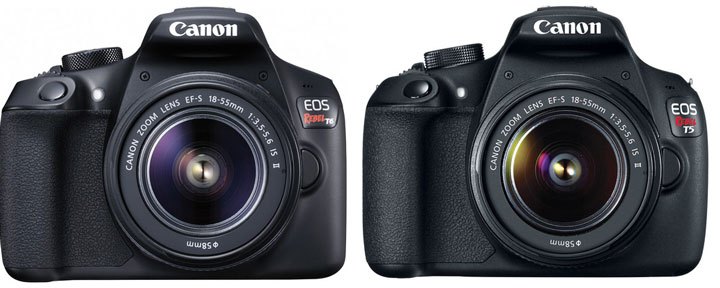
| Features / Models |
Canon 1300D/T6
|
Canon 1200D |
| Megapixel |
18 megapixels |
18 megapixels |
| Sensor size / type |
APS-C (22.3 x 14.9 mm) |
APS-C (22.3 x 14.9 mm) |
Image processor
|
Digic 4+ |
Digic 4 |
| Image stabilization |
No |
No |
| AF System |
Contrast + Phase Detect sensor |
Contrast Detect +Phase detect |
| AF points |
09 points |
09 points |
| ISO |
100-12800 |
100-12800 |
| Shutter Min/Max |
30sec 1/4000 sec |
30 sec 1/4000 sec |
| Top Continuous Shooting Speed |
3fps |
3fps |
| Video |
1920 x 1080 (30p,24fps) |
1920 x 1080 (30p,25fps) |
| Display |
3.0″ LCD Rear Touch Screen (920,000 pixels) |
3.0″ LCD Rear Touch Screen (460,000 pixels |
| Viewfinder |
Optical Viewfinder (95%) |
Optical Viewfinder (95%) |
| Hot-shoe |
No |
No |
| Battery Life (CIPA) |
500 shots |
500 shots |
| Wireless connectivity |
Built-In |
No |
| Dimensions |
129 x 101 x 78 mm |
130 x 100 x 76 mm |
| Weight |
485 g |
480g |
The Canon 1300D have very minor improvements over the Canon 1200D, as you can see from the specification comparison table when we look at Canon 1300D vs Canon 1200D comparison we only spotted the two difference Wireless connectivity and weight/ dimension.
Verdict: For new users we recommend Canon 1300D camera, but for Canon 1200D users we recommend you to wait for Canon 1400D / T7 camera.
Also see – Best lenses for Canon 1300D
Buy Canon 1300D from B&H.
By admin, on February 7th, 2016
 Both camera features excellent core specification and next generation of sensor technology, basically Fuji is bit slow compared to A6300 and limited to Full HD video. Take a look at the specification comparison review of both the camera. Both camera features excellent core specification and next generation of sensor technology, basically Fuji is bit slow compared to A6300 and limited to Full HD video. Take a look at the specification comparison review of both the camera.
| Features/ Models |
Sony A6300 |
Fuji X-Pro2 |
| Megapixel |
24.2MP APS-C Exmor CMOS Sensor |
24.3MP APS-C X-Trans CMOS III Sensor |
| Sensor size |
23.5 x 15.6 mm |
23.5 x 15.6 mm |
| Sensor Type |
Hybrid CMOS AF |
X-Trans CMOS Sensor |
| Low pass filter |
Yes |
No |
| Image processor |
BIONZ X Image Processor |
X-Processor Pro Engine |
| AF system |
425 Phase-Detect Points and 169 contrast AF points |
273-Point AF with 77 Phase-Detect Points |
| ISO |
100-51200 |
100-51200 |
| Shutter Type |
Electronic & Mechanical |
Electronic & Mechanical |
| Image Stabilization |
NO |
No |
| Shutter Min/ mix |
30 – 1/4000 |
30 – 1/16000 |
| Continuous shooting speed |
11 fps |
8 fps |
| Video |
Internal UHD 4K30 & 1080p120 Recording |
Full HD 1080p Video Recording at 60 fps |
| Display |
3.0″ 921.6k-Dot Tilting LCD Monitor |
3.0″ 1.62m-Dot LCD Monitor |
| Viewfinder |
XGA Tru-Finder 2.36m-Dot OLED EVF |
Advanced Hybrid Multi Viewfinder |
| Hot shoe |
Yes |
Yes |
| Wireless |
WiFi + NFC |
WiFi + NFC |
| Environmentally sealed |
No |
No |
| Battery life |
400 |
350 |
| Dimensions |
120.0 x 66.9 x 48.8 mm |
141 x 83 x 56 mm |
| Weight |
404 g |
495 g |
Sensor
Both camera loaded with advance Sensor technology. The Sony Hybrid Sensor Built with active Phase AF pixels, a total number number of 425 Phase AF points and 169 contrast detect zones to ensure you never miss a single frame while shooting.
No need of LPF in X-Pro 2 – Fuji developed 3rd generation of X-Trans Sensor for the X-Pro 2 camera. The Sensor uses randomized pixel array that completely eliminate the need of optical low-pass filter over it and enables blazing fast AF.
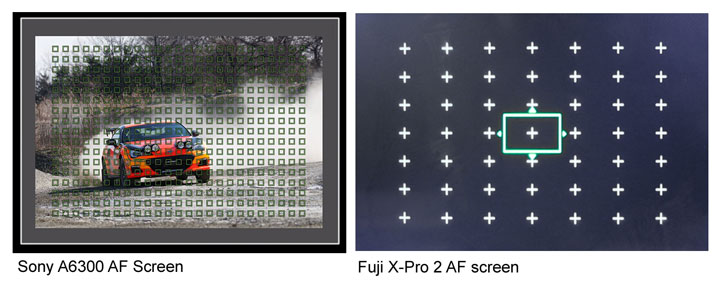 Full time AF with A6300 – Sony A6300 camera also feature newly developed 24 MP CMOS sensor with 425 Phase detect AF points and 169 contrast detect AF points and undoubtedly the Sony does faster AF than X-pro 2 camera. Take a look at the table below. Full time AF with A6300 – Sony A6300 camera also feature newly developed 24 MP CMOS sensor with 425 Phase detect AF points and 169 contrast detect AF points and undoubtedly the Sony does faster AF than X-pro 2 camera. Take a look at the table below.
| Camera models |
AF Lock Time in average condition |
|
| Sony A6300 |
0.05 |
|
| Fuji X-Pro 2 |
0.06 |
|
The fuji X-Pro 2 features a excellent Shutter range that goes from 60 to 16000 with the help of electronic and mechanical shutter on the other hand the Sony also feature Hybrid shutter but the range remains limited to 60-1/4000.
Continuous shooting speed in A6300 is more faster, the camera can shoot upto 11fps @ 24 MP image files, the Fuji X-Pro2 camera is limited to 5 fps only.
The Fuji X-Pro 2 camera unfortunately limited to Full HD mode only on the other hand the Sony A6300 can shoot 4 videos @ 30fps and Full HD videos at 120fps.
Verdict: Both camera uses new sensor but the Sony sensor is more advance in-terms of AF-capability, the Fuji X-Trans sensor is Low-Pass Less and we do expect bit more sharp images from Fuji. The Sony A6300 have more AF points and will cover more screen compared to Fuji So you never loos your AF on speedy subject.
The Sony A6300 is capable to shoot 4K videos on the go on the other hand the Fuji Xpro2 is limited to Full HD only.
The final choice is your depend upon the type of needs you have but based on Overall based on specification comparison we recommend you to get Sony A6300
Buy Sony A6300 from Amazon || Buy Sony A6300 from B&H
Take a look at Recommended Sony A6300 Lenses
By admin, on February 2nd, 2016
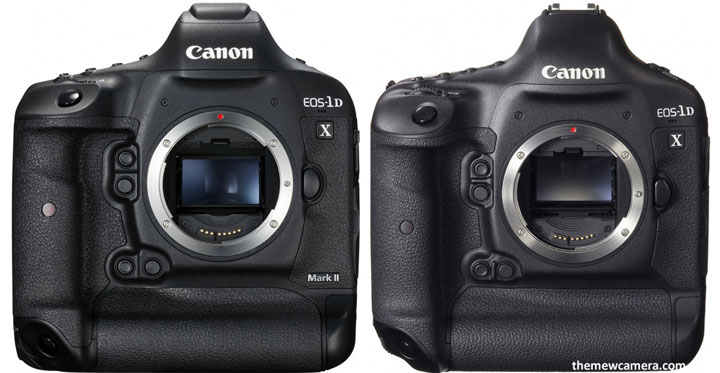
Canon 1DX Mark II features newly developed CMOS sensor and high end image processor, the camera also arrived with a option to record 4K video at 60fps. .. but does all these difference are sufficient to upgrade your current Canon 1DX DSLR.. have a look
| Features/ Models |
Canon 1DX Mark II |
Canon 1DX
|
| Megapixel |
20.2 MP |
18.1MP |
| Sensor size |
Fullframe sensor |
Fullframe sensor |
| Low pass filter |
Yes |
Yes |
| Image processor |
Dual DIGIC6 + processor |
Dual DIGIC 5+ |
| AF system |
61-point AF system, expanded range, 41-point cross-type |
61-point AF system, expanded range, 41-point cross-type |
| ISO |
100-51200 (expanded in 409600) |
50-204800 |
| Shutter Min/ mix |
30 – 1/8000 |
30 – 1/8000 |
| Continuous shooting speed |
16 fps |
14 fps |
| Video @ 60 fps |
4K @ 60fps |
Full HD 1080p @ 30fps |
| Display |
LCD monitor 3.2 inches, 1.62 million dots. Touch panel |
3.2″ 1.04m-Dot ClearView II LCD Monitor |
| Viewfinder |
Optical |
Optical |
| Hot shoe |
Yes |
Yes |
| Wireless |
WiFi + NFC |
WiFi + NFC |
| Environmentally sealed |
Yes |
Yes |
| Battery life |
|
|
| Dimensions |
150 x 167.6 x 82.6mm |
160 x 459 x 92mm |
| Weight |
1340g |
1415 g |
Take a look at the table above we can clearly see that Canon 1DX Mark II features better sensor and image processor and the killer combo responsible for upscaling the overall perofrmance of the camera.
Canon 1DX Mark II vs Canon 1DX — Sensor
The Canon 1DX mark II comes with slight increase resolution that will sure help commercial photographers to get more detail in the image that will sure help while taking out the large print-outs. More resolution also helps you while you re-compose your image while setting in the chair via digital zoom, however the 2MP difference won’t will never allow me to invest $5999 and buy a new camera instead of my current 1DX.
Introduction of Dual-Pixel CMOS Auto Focus sensor inside a Canon fullframe camera – Canon 1DX Mark II is the Canon first still FF DSLR to get the Dual pixel AF technology, although we have told you earlier many times that Canon will soon bring Dual-Pixel CMOS AF tech to FF DSLR after implementing it inside the 1DC cinema camera.
The other biggest difference is the ISO range- The Canon 1DX mark II enjoys 1-stop more ISO than its predecessor, the Canon 1DX was limited to 2014800 on the other hand the Canon 1DX mark II was limited to 409600.. so the 1-stop difference will allow 1DX mark II camera to get cleaner images in low-light condition.

Canon 1DX Mark II vs Canon 1DX Auto-Focus
Althoug the Canpn 1DX Mark II camera features same AF system as of the Canon 1DX camera but there are some sort of improvements take a look.
- All 61 AF point now work at F8 aperture, it will be a great help while shooting brids or any other subjects with telephoto lenses.
- Although the AF module remains same but the EOS-1D X Mark II’s AF algorithm has also been improved: it’s equipped with AI Servo AF III+, which remembers the AF path and helps refine precision. Whether choosing individual AF points manually, using the Large Zone AF area or any of the camera’s automatic AF selection modes, the EOS-1D X Mark II is designed to exceed users’ expectations for high-precision AF.
Improved RGB Metering Sensor (1DX 100K vs 1DX Mk II 360K)
The newly announced 1DX Mk II camera now features 360K RGB+IR metering sensor combined with Dual Digic 6+ processor that greatly contribute to the camera’s impressive AF performance for both stills and video.
The Canon 1DX Mark II can record 4K videos @ 60fps (1DX was limited to Full HD Video only)
The canon 1DX Mk II can record 4K (Motion JPEG)video at up to 60 fps, recording smoothly to CFast™ cards. It’s the first EOS camera able to record Full HD video at 120 fps. Users can select ISO upto 12800 for 4K video and 25600 ISO while recording Full HD video.
Introduction of Touch and Shoot Capability in 1DX series
The Canon EOS-1D X Mark II camera’s comes with a 3.2-inchtouch panel TFT LCD monitor has approximately 1.62 million dots Its new touchscreen function allows AF point switching and image magnification during Live View shooting and movie shooting, providing convenient operation.
New in-camera Digital Lens Optimizer technology
The EOS-1D X Mark II not only corrects peripheral brightness and chromatic aberration, but also features distortion correction plus diffraction correction, which has been included for the first time in an EOS camera. Distortion correction helps resolve barrel and pincushion distortions,while diffraction correction virtually eliminates the blurring effects from diffraction that can be created when capturing an image at a small aperture. The camera’s Dual DIGIC 6+ Image Processors help ensure these corrections can be made with virtually no effect on operational speed.
Verdict: For current Canon 1DX camera users I don’t recommend you to upgrade your camera with Canon 1DX Mark II, I suggest you to wait for the next version Canon 1DX Mark III.
Click here to pre-order Canon 1DX Mark II from B&H
By admin, on January 16th, 2016
Nikon D500 is an excellent camera and currently hold the flagship title of DX format line on the other hand the Fuji X–Pro2 is a flagship APS-C camera of Fuji.
 Image size comparison by thenewcamera The Nikon D500 features newly developed 20.9MP CMOS sensor and EXPEED 5 image processor, the camera feature a unbelievable native sensitivity range up to ISO 51200, which can be further expanded to ISO 1640000. Its almost un-matchable ISO speed of its class. The camera also features newly developed Expeed 5 image processor and it enables 4K shooting upto 30 min with the help of XQD cards. The other biggest advancement is the introduction of most advance Nikon AF Module inside the Nikon D500, Multi-CAM 20K 153-Point AF System features 153-point AF system, which features 99 cross-type points for fast performance..
From the above mentioned features we can clearly see that Nikon puts its all efforts to make a class leading machine.
on the other hand we have Fuji X-pro 2 camera…
The Fuji X-Pro 2 is a complete break-trough in terms of technology, the camera features ultra advance image sensor X-Trans III (3rd generation) that gives image quality equivalent to full-frame DSLRs. The camera ISO goes upto ISO 51200, which is somehow low compared to Nikon D500, the other big disadvatge of X-Pro 2 in front of Nikon is lack of 4K recording mode, the camera is limited to 60fps.
But the sensor technology used by Fuji is far advance than Nikon’s traditional sensors, the Fuji uses Hybrid X-Trans III CMOS AF sensor that features built in 273 points, of which 77 are phase-detection points, Approximately 40% of the imaging area is covered by phase-detection points. The use of X-Trans tech completely rejects the use of low-pass filter and in-return you get ultra sharp images.
| Features/ Models |
Nikon D500
|
Fuji X-Pro 2
|
| Sensor |
20.9MP DX-Format CMOS Sensor |
24.3MP APS-C X-Trans CMOS III Sensor |
| Sensor size |
APS-C (1.5x Crop Factor) |
APS-C (1.5x Crop Factor) |
| Sensor Type |
Contrast Detect |
Contrast + Phase Detect |
| Low pass filter |
No |
No |
| Image processor |
Expeed 5 |
X-Processor Pro Engine |
| AF system |
Multi-CAM 20K 153-Point AF System, 99 cross type
|
273-Point AF with 77 Phase-Detect Points |
| ISO |
50-1640000 |
100-51200 |
| Shutter Min/ mix |
30-1/8000 |
30-1/32000 |
| Continuous shooting speed |
10 fps |
8 fps |
| Video |
4K UHD Video Recording at 30 fps |
Full HD 1080p/60 Video |
| Display |
3.2″ 2,539k-Dot Tilting Touchscreen LCD |
3.0″ 1.62m-Dot LCD Monitor |
| Viewfinder |
Optical |
Advanced Hybrid Multi Viewfinder |
| Hot shoe |
Yes |
Yes |
| Wireless |
Built-In |
Built-In |
| Environmentally sealed |
Yes |
Yes |
| Battery life |
1240 |
350 |
| Dimensions |
147 x 115 x 81 mm |
149 x 112 x 78 mm |
| Weight |
860 g |
495 g |
From the specification comparison table we can see that
Nikon D500 has lower sensor resolution: The Nikon D500 has lower sensor resolution, the sensor of the Nikon D500 is based on traditional CMOS sensor design and it is limited to Contrast based AF while user is using display or shooting videos. Fuji X-Pro2 camera does have bit higher resolution and it also features Hybrid CMOS X-Trans AF sensor that enables high speed AF all the time despite of lightening condition.
Low-pass filter is absent in both the camera, The low pass filter in D500 is physically removed and the X-Trans architecture based X-Pro 2 camera doesn’t requires any low-pass filter.
Image Processor: There variable parameters to judge a image processor of a camera, the Nikon D500 is able to process 4K UHD video, boost the High speed ISO upto 1640000. That clearly tells us that Nikon does have advance image processor.
AF system: The Nikon D500 AF system look bit inferior in front of the Fuji XPro 2 camera, the Fuji X Pro 2 camera features a high density AF system that composed of 273-Point AF with 77 Phase-Detect Points, Approximately 40% of the imaging area is covered by phase-detection points, on the other hand we have the Nikon D500 that features Multi-CAM 20K 153-Point AF System, 99 cross type AF points. The other most important part you should know that the Nikon D500 Phase AF is active only when you are using viewfinder and when you switch to Display or shoot video the contrast AF gets active. But with the Fuji X-Pro 2 camera the high speed AF is always active while you are using display or shooting a video.
ISO: The Nikon D5500 features epic ISO range, now the ISO rating becomes a marketing gimmick for companies however bases on specification sheet the Nikon’s wins by a big margin and Fuji X-Pro 2 limited ISO 51200 look inferior.
Continuous shooting speed: Nikon D500 offers high speed continuous shooting speed compared to Fuji X-Pro 2 camera.
Nikon offers 4K UHD video recording capability on the other hand the Fuji is limited to shooting Full HD video only. 4K UHD movie image format is an area that provides a 1.5x increase in the effective focal length of the lens in use and is reserved for 4K 3840 x 2160 recording.
Nikon does have better display screen that touch operation and it is better than Fuji X-Pro 2 camera.
Verdict: Nikon have extensive lens support of its DX series D500 camera, features better ISO range and able to record 4K video, but the X-Pro 2 camera features advance AF system as well as 3rd genartion of X Trans CMOS Sensor will give more details at base ISO.
New users — If you are looking for a excellent machine and a dedicated still shooter you must go with Fuji X-Pro 2 camera, If you are a Still shooter as well as Videographer you must go with the Nikon D500.
Buy Nikon D500 from B&H and Amazon
Buy Fuji X-Pro 2 from Amazon || B&H
Also see Best Lenses for Nikon D500
By admin, on January 8th, 2016
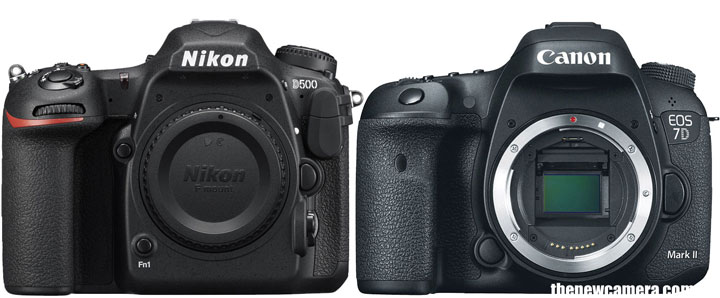
We have done Nikon D500 vs Canon 7D Mark II Specification Comparison review, both the camera features excellent core specification, let’s take a look at the specification comparison table below or directly Jump to Verdict
Nikon D500 vs Canon 7D Mark II – Specification Comparison
| Features/ Models |
Nikon D500
|
Canon 7D Mark II
|
| Megapixel |
22 megapixels |
21 megapixels |
| Sensor size |
APS-C (23.5 x 15.7 mm) |
APS-C (22.4 x 15 mm) |
| Sensor Type |
Contrast Detect |
Contrast + Phase Detect |
| Low pass filter |
No |
Yes |
| Image processor |
Expeed 5 |
Dual DIGIC 6 Image Processors |
| AF system |
Multi-CAM 20K 153-Point AF System, 99 cross type
|
65-Point All Cross-Type Phase-Detect AF |
| ISO |
50-1640000 |
100-51200 |
| Shutter Min/ mix |
30-1/8000 |
30-1/8000 |
| Continuous shooting speed |
10 fps |
10 fps |
| Video |
4K UHD Video Recording at 30 fps |
Full HD 1080p/60 Video |
| Display |
3.2″ 2,539k-Dot Tilting Touchscreen LCD |
3.0″ 1.04m-Dot Clear View II LCD Monitor |
| Viewfinder |
Optical |
Optical |
| Hot shoe |
Yes |
Yes |
| Wireless |
Built-In |
|
| Environmentally sealed |
Yes |
Yes |
| Battery life |
1240 |
670 |
| Dimensions |
147 x 115 x 81 mm |
149 x 112 x 78 mm |
| Weight |
860 g |
960g |
Sensor:
The recently announced Nikon DX fromat camera features a 20.9 MP APS-C format based sensor powered by Expeed 5 image processor. The Sensor features a native ISO range of 100-51200 and the expendable ISO range of the sensor starts from 50-1640000 (Lo 1 to Hi 5).
With the help of newly developed sensor and advance image processor the camera is able to touch such a high ISO range that creates almost a world record.
Canon 7D Mark II features newly developed 20.2MP CMOS sensor powered by dual DIGIC 6 image processors, the native ISO range of the camera is 100-16000 and the expandable ISO range is upto 51200.
Additional advantage of Canon 7D Mark II camera is it uses Hybrid Dualpixel CMOS AF sensor that enables blazing fast Auto-focus during video and live-view shooting.
So technically the Canon uses more advance sensor compared to Nikon D500, however the ISO range of Nikon is too high and will perform better than Canon.
Low Pass Filter
Nikon D500 doesn’t have low pass filter and hence the camera will give more details in images compared to the Canon 7D Mark II.
Auto-Focus
The Auto-focus system of Nikon D500 is advance compared to the Canon 7D Mark II AF system.
The Nikon D500 features Multi-CAM 20K 153-Point AF System same of Nikon D5 and uses 99 type cross AF-points. On the other hand the Canon 7D Mark II AF system is limited to 65-Point All Cross-Type Phase-Detect AF.
However The Canon 7D Mark II is using Advance dualpixel CMOS AF system that will do super fast AF while you are using Live view display or shooting a video.
ISO Range: The ISO range of Nikon D500 is epic, the lowest range starts from 50-1640000 on the other hand the Canon 7D Mark II is limited to 100 – 51200, the standard ISO range Nikon D500 camera is 100-51200 whereas the standard ISO range of Canon 1DX Mark II is 100-16000.
The shutter range and continuous shooting speed of the camera remains same, so no big difference can be found here.
Video: The Nikon D500 camera can record 4K video at 30 fps, Canon 7D Mark II remain limited to Full HD video recording.
Nikon D500 vs Canon 7D Mark II – Verdict:
Verdict: Form the specification comparison we can clearly see that Nikon D500 have better score in specification on paper.
The major difference between the Nikon D500 and Canon 7D Mark II is
- High ISO sensitivity – the MAX standard ISO sensitivity of Nikon D500 is 51200 on the other hand Canon 7D Mark II Max Standard ISO sensitivity is 16000.
- More Focus Points: The Nikon D500 features more focus points, Nikon D500 have 153 AF points but Canon 7D Mark II is limited to 35 Phase AF points.
- Ability to focus on dim-light Condition, the Nikon D500 can do AF in dark situation as -4EV and Canon 7D Mark II AF is effective upto -3EV only.
- Nikon D500 Records 4K videos upto 29 mns (not supported by 7D Mark II)
- Electronic VR is supported Nikon D500 while recording Full HD videos.
Buy Nikon D500 from B&H and Amazon
By admin, on January 6th, 2016
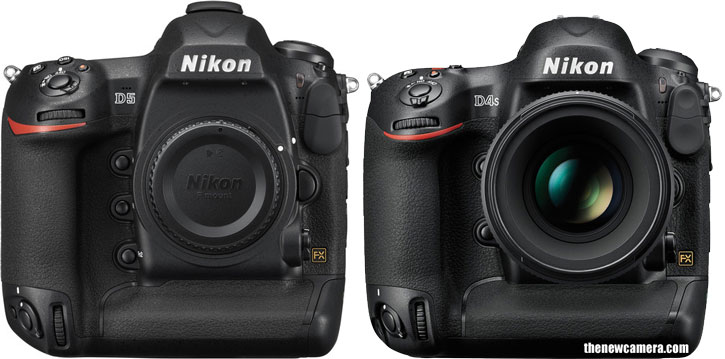 Take a look at the specification comparison review between these two camera, The recently announced Nikon D5 is world first DSLR to feature 4K video recording … and a lot more specification upgrade compared to its predecessor Take a look at the specification comparison review between these two camera, The recently announced Nikon D5 is world first DSLR to feature 4K video recording … and a lot more specification upgrade compared to its predecessor
| Features/ Models |
Nikon D5
|
Nikon D4s
|
| Megapixel |
21 MP |
16 MP |
| Sensor size |
Fullframe sensor |
Fullframe sensor |
| Low pass filter |
Yes |
Yes |
| Image processor |
Expeed 5 |
Expeed 4 |
| AF system |
153 AF Points – 99 Cross Type |
51 AF Points – 15 cross type |
| ISO |
50-3280000 |
50-409600 |
| Shutter Min/ mix |
30 – 1/8000 |
30 – 1/8000 |
| Continuous shooting speed |
14 fps |
11 fps |
| Video |
4K (30p/25p/24p) |
Full HD (60 /30 / 24 fps), |
| Display |
3.2″ 2.36m-Dot Touchscreen LCD Monitor |
3.2″ 921k-Dot LCD Monitor |
| Viewfinder |
Optical |
Optical |
| Hot shoe |
Yes |
Yes |
| Wireless |
WiFi + NFC |
WiFi + NFC |
| Environmentally sealed |
Yes |
Yes |
| Battery life |
|
3020 Shots |
| Dimensions |
160X459X92 mm |
132X101X78 mm |
| Weight |
1415 g |
1350 g |
Sensor: Nikon D5 features a newly developed 20.8 MP Fullframe sensor exclusively designed and developed for the Nikon D5 flagship camera and in combination of Expeed 5 image processor the camera ISO range touches 3.3 Million ISO mark (3280000 ISO) which creates a world record itself, till date no other consumer camera in the world is able to touch even 1 Million Max ISO range. On the other hand the Nikon D4s camera MAX ISO range is limited to half a million ISO mark (409600 ISO).
From the above it is very clear that the sensor of the recently announced camera is better than of the Nikon D4s camera
Image Processor: Nikon D5 uses advance Expeed 5 image processor, and thanks to the new processor Expeed 5 enables D5 to capture 4K video and enables Full time AF while shooting at 12frames per second @ 21 MP while the Nikon D4 is expeed 3 image processor is limited to Full HD video recording and captures 11 frames per second @ 16MP files.
From the above we can see that Expeed 5 image processor is very fast compared to the Expeed 4 image processor.
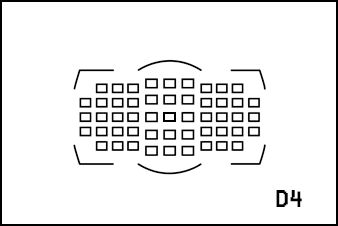
AF System: The recently announced Nikon D5 uses Multi-CAM 20K AF system and the Nikon D4s was using Multi-CAM 3500FX AF system. Nikon D5 AF points is approx 3 times more dense compared to Nikon D4s AF points, Nikon D5 offers 153 Phase AF points and 99 type cross AF points on the other hand the Nikon D4s is limited to 51 AF Points – 15 cross type points, more AF points clearly means more screen coverage and more accuracy.
ISO: Now the number tells everything. The recently announced Nikon D5 is capable to shoot images upto 3.3 Million ISO range on the other hand the Nikon D4s was limited to 1/2 Million ISO, its a very big change and will allow to take images of your desired subjects in moon light.
Continuous shooting speed: The continuous shooting speed of the Nikon D5 is amazing, you get 12fps with fulltime AF support and 14fps with AF lock, the Nikon D4s continuous shooting was limited to 11 fps only.
Video: Nikon made a breakthrough by adding 4K support, the Nikon D5 becomes world first camera to feature 4K video, So the Nikon D5 is a prefect solution for not only photographers but also for cinematographers. Nikon D4s is limited to recording Full HD videos only.
Verdict: Nikon made a machine that may remains on TOP for next five years without a doubt, I have never seen such a major jump in the core specification of any successor, form the specification point of view it’s look like Nikon announced Nikon D10 🙂
However, for Nikon D4s users and other pro shooters we highly recommend you to buy Nikon D5 camera, since no mirorless or DSLR of present day world can match the core specification of Nikon D5.
Buy Nikon D5 from Amazon || B&H
By admin, on November 7th, 2015
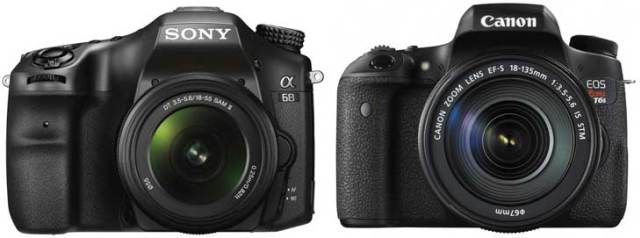 Sony A68 vs Canon 760D, the Canon 760D is a Mid entry level DSLR camera and the Sony SLT is Mid Entry level SLR camera. Sony A68 vs Canon 760D, the Canon 760D is a Mid entry level DSLR camera and the Sony SLT is Mid Entry level SLR camera.
| Features/ Models |
Sony A68 |
Canon 760D |
| Megapixel |
24 MP |
24 MP |
| Sensor size |
APS-C |
APS-C |
| Low pass filter |
Yes |
Yes |
| Image processor |
Bionz X |
DIGIC 6 |
| AF system |
79 including 15 Cross-type AF Points |
19-point all crossed type AF System |
| ISO |
100-25600 |
100-25600 |
| Shutter Min/ mix |
30 sec 1/4000 sec |
30 Sec 1/4000 Sec |
| Continuous shooting speed |
8fps |
5 fps |
| Video |
1920 x 1080 (60p, 30p) |
1920X1080 @ 30p |
| Display |
2.7” LCD Rear Touch Screen |
3″ Pivoting Touch Screen LCD with 1,40,000 Screen Dots |
| Viewfinder |
EVF 100% |
Optical |
| Hot shoe |
Yes |
Yes |
| Wireless |
WiFi + NFC |
WiFi + NFC |
| Battery life |
|
440 Shots |
| Dimensions |
|
132X101X78 mm |
| Weight |
|
55g |
Sensors:- Both the cameras Sony A68 and Canon 760D have same resolutions of 24MP .
Before we begin to compare the core specification only we must know that the type of technologies both camera are using, the Canon is a pure DSLR camera and on the other hand the Sony A68 SLT technologies based camera.
In SLT system the mirror doesn’t flip up anytime weather you are shooting via viewfinder of display uni.So, the bit disadvantage of the SLT system due to the fixed translucent mirror is the translucent mirror doesn’t flip-up and LESS light pass thorough the sensor, hence approx 10 to 20% of the light falling on the sensor is consumed by the SLT mirror and as a result the low-light performance is not up to the mark and on the other side the Canon allows full light to fall in the sensor by flipping-up the mirror hence the Sensor performance is optimal.
On the other hand the Canon 760D 19 point AF system is active when you are using viewfinder and when you switch to Live view the Hybrid AF system gets active. Hence the AF system of the Canon 750D is bit more complex but best for DSLR users.
ISO: Despite of having the same ISO range the Canon will perform better in low-light condition compared to Sony A68 SLT camera.
Continuous Shooting Speed:- Sony A68 has continuous shooting speed of 8fps while Canon 760D has 5fps. So, Sony A68 will perform well with better result during capturing fast action objects such as running train or flying birds or any action objects.
Videos:- Sony A68 captures Full HD video with high bit-rate 50Mbps XAVC S format at 60 fps while Canon 760D also capture Full HD 1080p Video Recording at 30 fps.
Hence, the frame per second rate of Sony A68 is definitely faster than Canon 760D, which makes the Sony A68 to capture videos faster compare to Canon 760D.
Verdict – We recommend you to go with Canon 760D camera if you are a still shooter since it based on better technology and also supports many EF and EF-S Lenses on the other hand the Sony A68 is recommend for sports and still shooters.
|
KEEP THIS BLOG ALIVE - Support New Camera Buy Canon Lenses, Buy Music CD or Digital Camera at amazon it helps this site, and you do not pay anything extra, it is just a way to help support this site.

|
 We have done a extensive research to find out why Canon announced 1300D / T6 camera ? the camera features almost same core specification as of Canon 1200D except wireless connectivity. The core specification of Canon Rebel 700D and 1300D matches absolutely.
We have done a extensive research to find out why Canon announced 1300D / T6 camera ? the camera features almost same core specification as of Canon 1200D except wireless connectivity. The core specification of Canon Rebel 700D and 1300D matches absolutely.
















